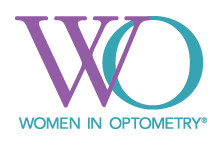The results of the most recent Women In Optometry Pop-up Poll show that easy-wash-and-wear clothing is likely to dominate the scene in most optometry practices for the time being. More than 300 people responded to this poll, showing a high level of interest in how potentially to keep work germs out of the house.
Forty percent of respondents said that they’ll be wearing scrubs when they return to practice. Another 24 percent said they’ll be wearing scrubs plus a white coat, potentially adding one more fabric layer of separation between themselves and patients. Sixteen percent said that they’re likely to wear the white lab coat over their business or business/casual clothes.
Business casual clothing—khakis, polo shirts, cotton fibers – round out the listing. Thirty-five percent of respondents said that clothing protocols for staff will be changing—with staff members switching to scrubs.
An earlier WO Pop-up Poll found that about 40 percent of ODs routinely wear their white coats, while another 40 percent said they do not.
Respondents to this poll also noted that they’re reconsidering their footwear, with many saying that they are looking for footwear that can be hosed off or washed easily. While nearly 42 percent said they anticipate wearing the same shoe styles they wore pre-COVID, 35 percent said they expect to wear machine-washable shoes—Keds, Rothys, Toms, sneakers. Another 17 percent said they’ll be wearing hosable/wipeable shoes like Crocs and Dansko clogs.
GOODBYE TO THE TOES
A number of respondents to this poll said that the office policy will be no open-toed shoes for the foreseeable future. In a 2019 WO Pop-up Poll, nearly 50 percent of respondents said it is ok and appropriate for a doctor to wear open-toed shoes. We can assume that the 36 percent who said it was not ok to do so would be larger now.
MORE PRECAUTIONS
Many respondents to this poll also included other protocols they’re implementing.
Personal protection
- Wearing face shields
- Having everyone wear masks
- Having some staff wear gloves
- Wearing disposable surgical gowns
- Requiring that long hair must be tied back; pony tails
- Not wearing ties
- Not wearing jewelry
- Wearing scrub caps
- Wearing safety glasses for up-close procedures
- Washing clothes immediately upon getting home
Office changes
- Installing sneeze guards/breath shields on diagnostic equipment
- Installing plexiglass dividers at check-in desks, cashiers, other desks
- Putting up more sanitization stations
- Adding pulse ox testing
- Hanging clear shower curtains as dividers throughout the office
- Minimizing patient load at 50 percent
- Identifying social distancing zones



